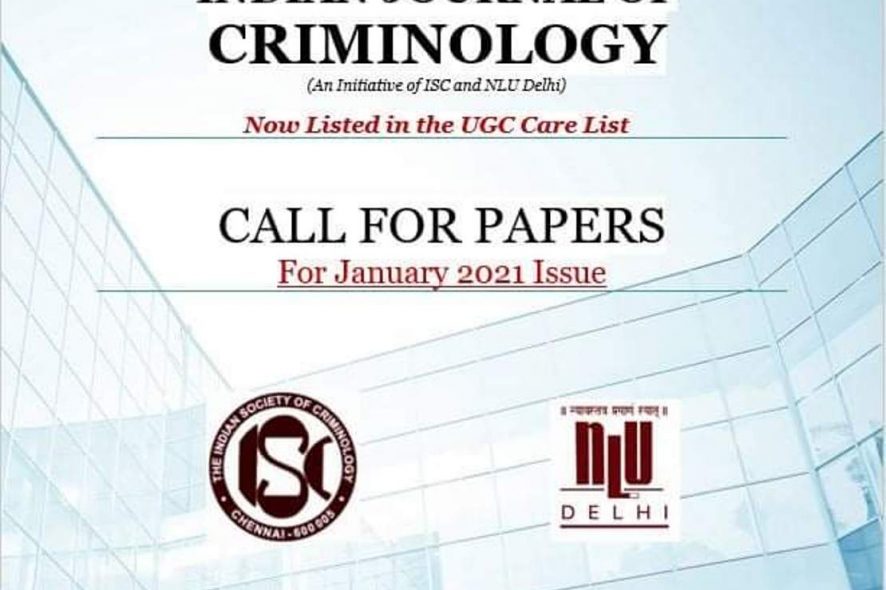Submission Guidelines for publication in the Indian Journal of Criminology:
- All editorial correspondence should be addressed to the Journal’s Editor, at indianjournalofcriminology@gmail.com
- Manuscripts must be in English and should be submitted in soft copy through email, at indianjournalofcriminology@gmail.com
- The preferred maximum length for an Article is 7000–8000 words, Essay is 5000–6000 words, Note/Comment is 3000–4000 words, and Book Review is 1500–2500 words, including Abstract (200–250 words) and Footnote(s).
- Contributors must provide a Cover Letter to accompany the manuscript submission. The Cover Letter should include the following statements:
-
- I confirm that the citations in the attached manuscript are accurate.
- I confirm that I have read the submission policy and that my manuscript complies with the Journal’s submission policy.
- I confirm that any part of the manuscript does not violate any copyright of others.
- Use of italics and diacriticals should be minimised, but used in a consistent manner all through the text, if any. Tables and figures to be indicated by numbers separately (see Table 1.), not by placement (see Table below). All Figures and Tables should be cited in the text. Source for figures and tables should be mentioned, irrespective of whether or not they require permissions.
- References are to be written according to the Harvard Method, by giving the author’s name and date ofpublication in the text,for example (Smith, 2019). List of References at the end of the paper should be in an alphabetical order of authors. For information on the citation style following Harvard Method, kindly refer to the link: HERE
- Book reviews must contain—the name of author/editor and book reviewed, place of publication and publisher, year of publication, number of pages, and price.
- Once submitted, a manuscript goes through the following stages:
- The Editor will first peruse the manuscript to check whether it fits well within the aims and scope of the Indian Journal of Criminology.
- Once the preliminary checks are done, the manuscript will be peer-reviewed, which may take at least 3–4 weeks. The Journal follows a typical double-blind review process.
- Depending upon the reviewers’ recommendations, the manuscript is either accepted, suggested for revisions, or absolutely rejected. In case of revisions, rewriting suggestions will be given to the author/contributor, who will then modify the manuscript as per the requirements;thereby sending back the revised manuscript.
- Once the Editor finally approves a manuscript, then it is forwarded to the publishing unit, to be included in the Journal.
Submission of the articles is a continuous process and has no specific dates for both the issues published bi-annually.Accepted articles if not published in the first issue, will be placed in the next issue. Contributor(s)/Author(s) shall be sent an acceptance letter,based on the peer-reviewed acceptance process. Soft copy of the article shall be sent to the Author(s) of the accepted manuscripts, for their kind references.However, the print copy may be purchased by sending a demand for the same,at indianjournalofcriminology@gmail.com.
All communication regarding Journal may be addressed to: indianjournalofcriminology@gmail.com






